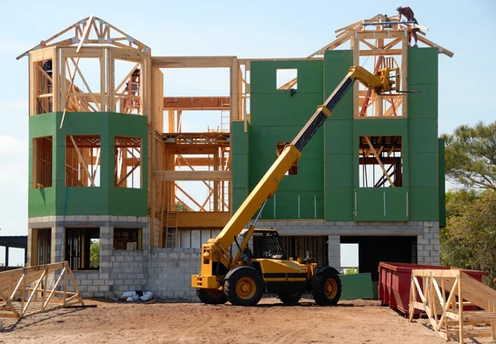Econ 101 – A Shortage of Supply
- There is a severe lumber and other building materials supply shortage in the US that has been ongoing for the last year.
- This was caused by the increased demand during COVID for home repairs as well as a drastic decrease in supply when production was shut down.
- As a result, lumber and other materials prices have skyrocketed. This, obviously, increases the cost of building.
I recently tried to make some additions to my deck at my house and ran into a problem – I can’t get a contractor to actually give me a bid. I realize that, in the grand scheme of city wide improvements, this is not a big issue – except to me. But it also made me wonder why this was so difficult. What is going on?
I figured at least part of the reason was what I had been hearing a lot lately – there is a shortage of building supplies that has increased costs. But I wanted to know more and see how that is affecting the housing market. So this week, we are going to look a little into what is going on with building supplies and what the future may bring.
Is there a Supply Shortage?
The threshold question is simple – is there actually a building supplies shortage? From everything I have read and heard – the answer is yes.
Perhaps the most obvious and talked about is a lumber shortage. According to most reports, there has been a drastic shortage of lumber since mid-2020. And, as a result, it is much more difficult and costly to get anything built.
Beyond lumber, there has been an extreme shortage of other building supplies as well – such as steel, electrical, and lighting supplies. The shortage started last year and has continued through to this day. And its not totally clear to me how and when it will fully catch up.
Reason for the Shortage
I reckon you can guess what the reason for the shortage is. The same thing that has influenced everything for the past year – the pandemic.
At the start of the pandemic, production and operations for so many industries just stopped. As a result, we had little to no production of lumber, steel, electrical supplies, etc. for weeks. And then when the production restarted, it had a lot of catching up to do.
But another interesting thing happened during the pandemic – the demand for lumber (and other building materials) skyrocketed. People were stuck at home so they decided to work on those long put off home improvement projects. And with interest rates at all-time lows, they could refinance the house and use some of that money for the projects.
Effect of the Shortage
So while the building materials supply has decreased dramatically, the demand for the materials has increased. Indeed, in addition to home improvement projects, many cities across the country have a severe housing shortage. There is great demand for all kinds of housing – including affordable housing. As a result, when fall rolled around, new housing starts increased which led to an even greater demand for supplies.
Anyone who took Econ 101 in college knows, therefore, that when you have demand for building materials but little supply of them – the price is going to shoot up. And that is exactly what has happened in the past year.
And because of this drastic increase, the cost of construction has gone up dramatically. Builders are very worried that they may reach a point where consumers will not be able to or interested in purchasing or renting at the costs that the increased construction demands. That could, theoretically, lead to an even greater decrease in housing availability.
So when will the cost of building materials come back down? Will supply catch up? At least one analyst has opined that, as vaccines become more prevalent this year, lumber mills will ramp up production and increase supply. But that may take well into 2022 or even 2023 before that happens. Until then, high prices may be here to stay.


